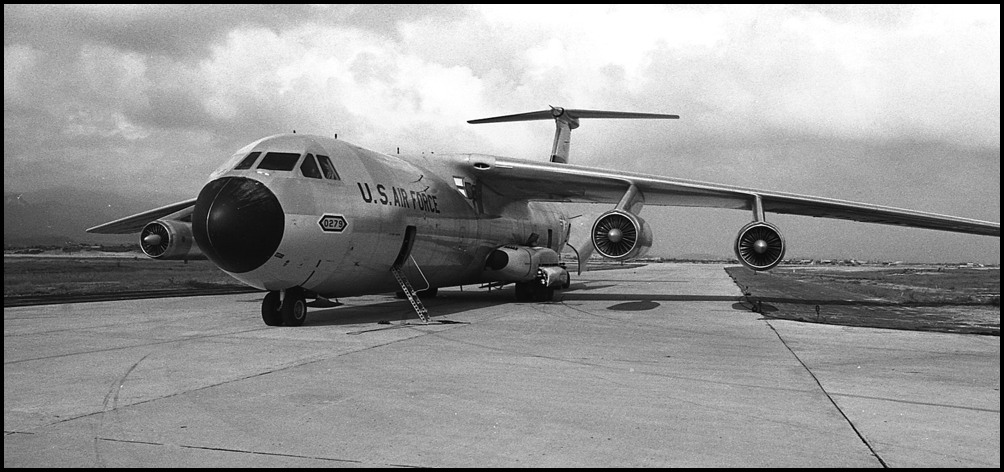The Book:
SEABEE71
IN CHU LAI
A 350 page memoir of a Navy Journalist's 14 months with the Seabees.

Photographs and text copyright © 1967 and 2019 by David H. Lyman

I stood in line at the Military Transport counter at the DaNang Airport waiting to check in for a flight to Japan. Then, I waited. Late afternoon, toward dusk, with thoughts of spending the night in the terminal, my name is called. I met the crew chief for a C-141 heading back to the States, with a refueling stop in Japan.
“I required to warn you,” he said as we shook hands. “I have to tell you, this is a KIA flight. You okay with that?” What he said didn’t really register. Any flight out of here was better than spending the night in the terminal, so I followed the Airman out and across the apron to his mammoth silver bird, two engines drooping under each wing.
I followed the crew chief up the ladder and through the crew door. A single row of passenger seats, the web kind, was against the forward bulkhead. I dropped my gear in an adjoining seat, sat down and buckled in. As I looked up, toward the rear of the cargo bay, 5 feet away I was faced by a wall of sliver aluminum cases, stacked four across, four high, and they went all the way back.
Then it dawned on me. This was a KIA flight, “Killed In Action.” Those were coffins. Each contained the body of an American serviceman. This flight was taking my fellow Americans home. I tried to count. There must have been over 100 of these KIA cases filling the cargo bay.
I sat looking at the wall. This was the first time in six months I’d fully realized: boys where getting killed over here. And that’s what we were doing here in Vietnam–spending the lives of these guys, just as The Brass was spending millions of dollars on infrastructure, material and ordinance to fight this Old Man’s War.
I tried not to think about who was inside that one case on the bottom row, third from the left. I could see a name, rank and serial number on a label in a holder. I did not want to know. Here I was, alive—flying up to Japan to work at Stars and Strips then climb some mountains on R&R. My choice to signup for the Naval Reserve five years ago was the reason I was sitting here, and not in the Army, or in one of those cases. In a few months, all this would be behind me. I’d be out of Vietnam, out of the Navy—my whole life now ahead of me. These boys would not have that opportunity. They’d not be able to live out their lives, get laid, find a job, marry, start a family, raise a few kids, run for office, start a business, write a book.

